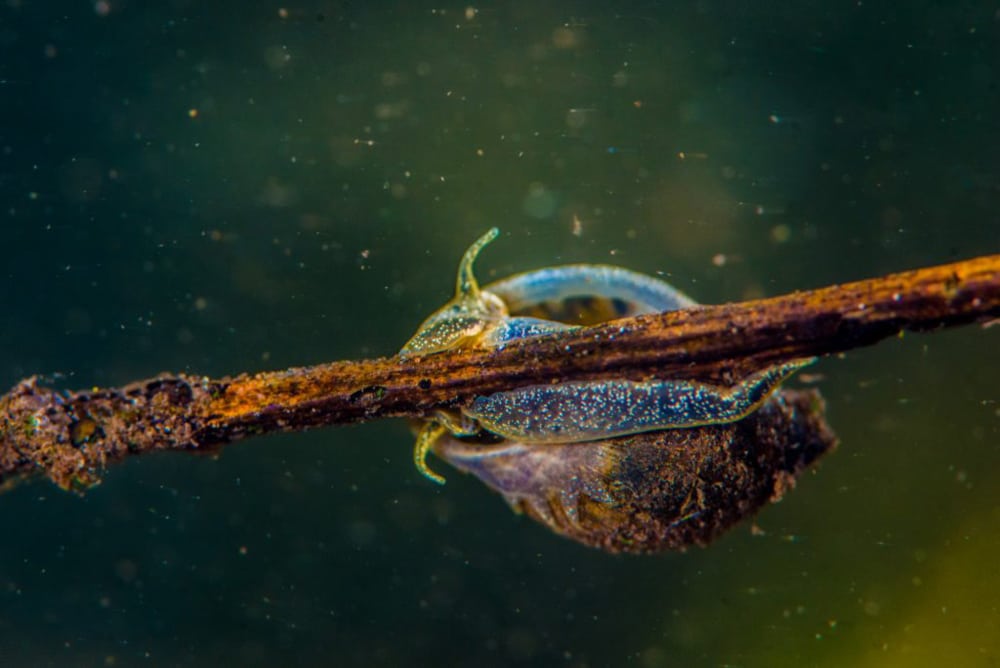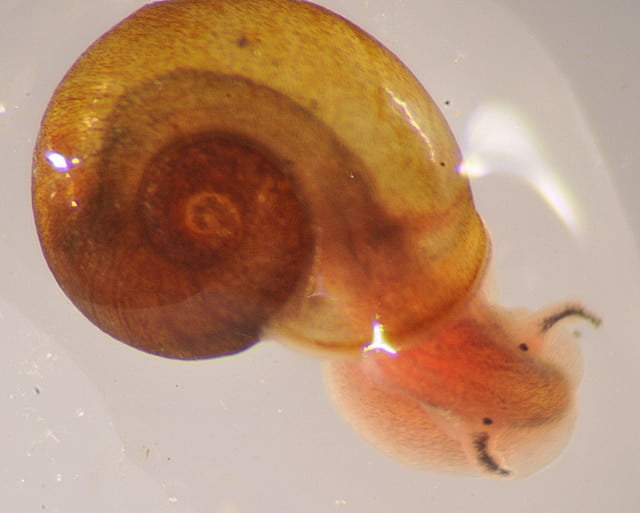- Also called Lunged Snails
| Phylum: | Mollusca |
| Class: | Gastropoda |
| Order: | Subclass: Pulmonata |
Identification Tips:
• Lack an operculum (hardened cover over shell opening when body is withdrawn; located on top of rear of foot when extended)
• Some seal opening with mucous when hibernating
Life History:
• Most are hermaphroditic; self-fertilizilation is possible in some, but not common
• Eggs are laid in spring, usually in small gelatinous mass attached to an underwater object
• Most live 1 year or less
• Some produce multiple generations in year
• Some types use lung-like structure to breathe air, some to breathe water
• Some can tolerate extremely low levels of oxygen in the water
• Can hibernate in mud during dry or frozen periods
| POLLUTION TOLERANCE | ||||
| Very Sensitive | Somewhat Sensitive | Facultative | Somewhat Tolerant | Very Tolerant |
| Some | Most | |||
| Pollution Indicator | Invertebrate community with high proportion of lunged snails is a reliable indictor low oxygen conditions, often caused by organic/nutrient pollution |
––––––
Primary Information Source:
Voshell, J. Reese. 2002. A Guide to Common Freshwater Invertebrates of North America. McDonald and Woodward Publishing Company. Blacksburg, Virginia.


